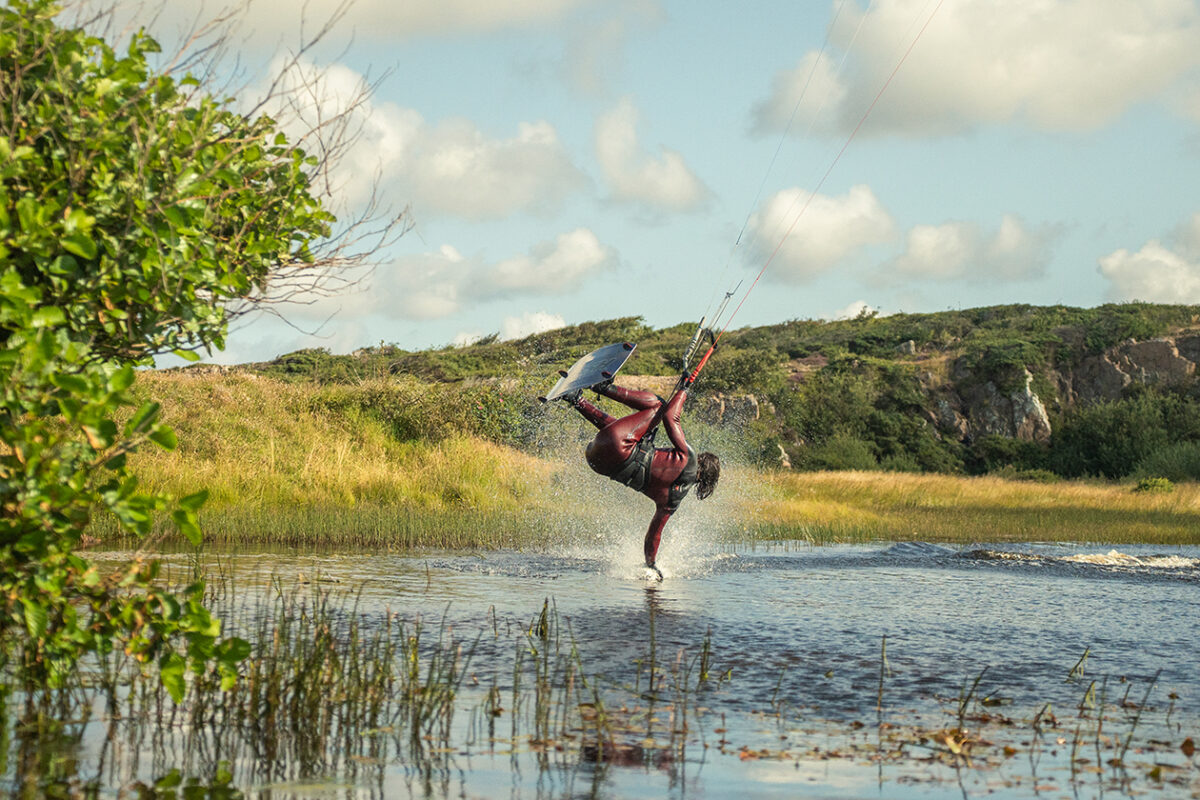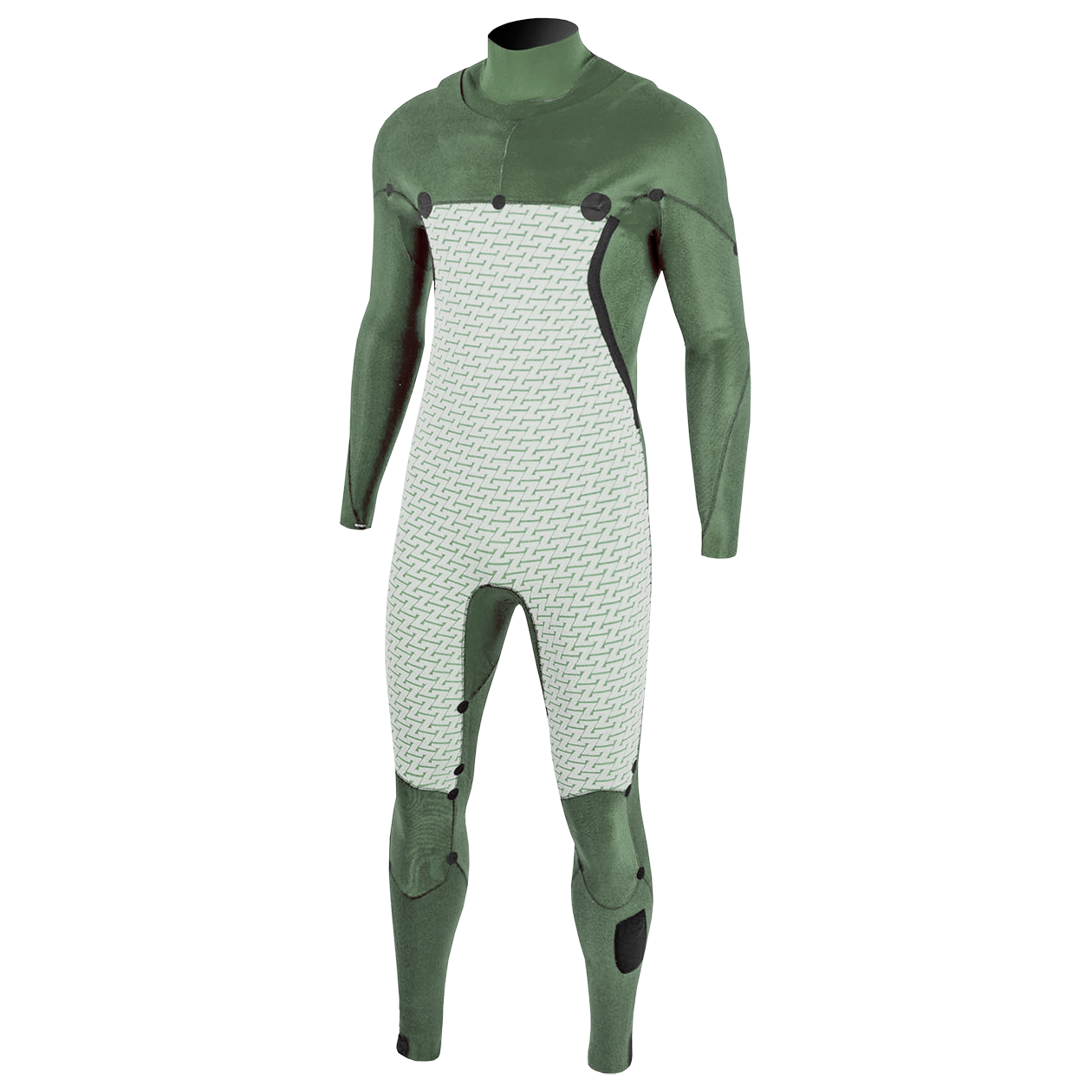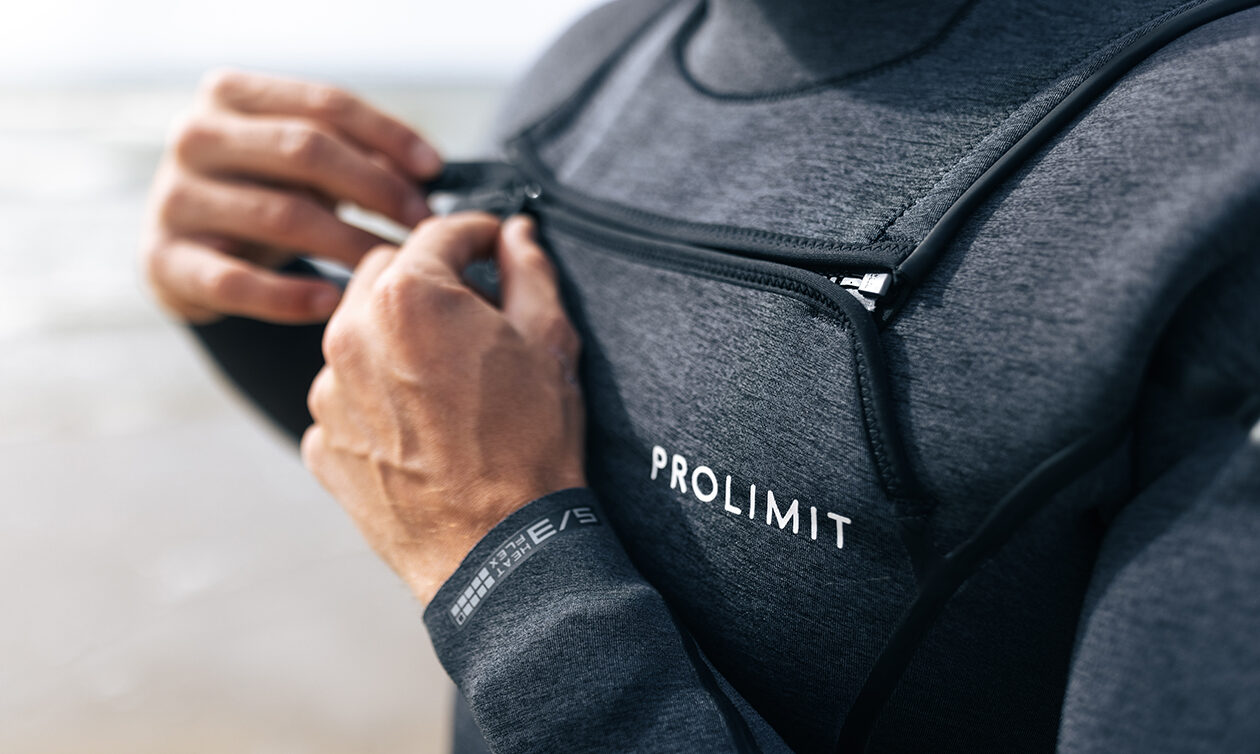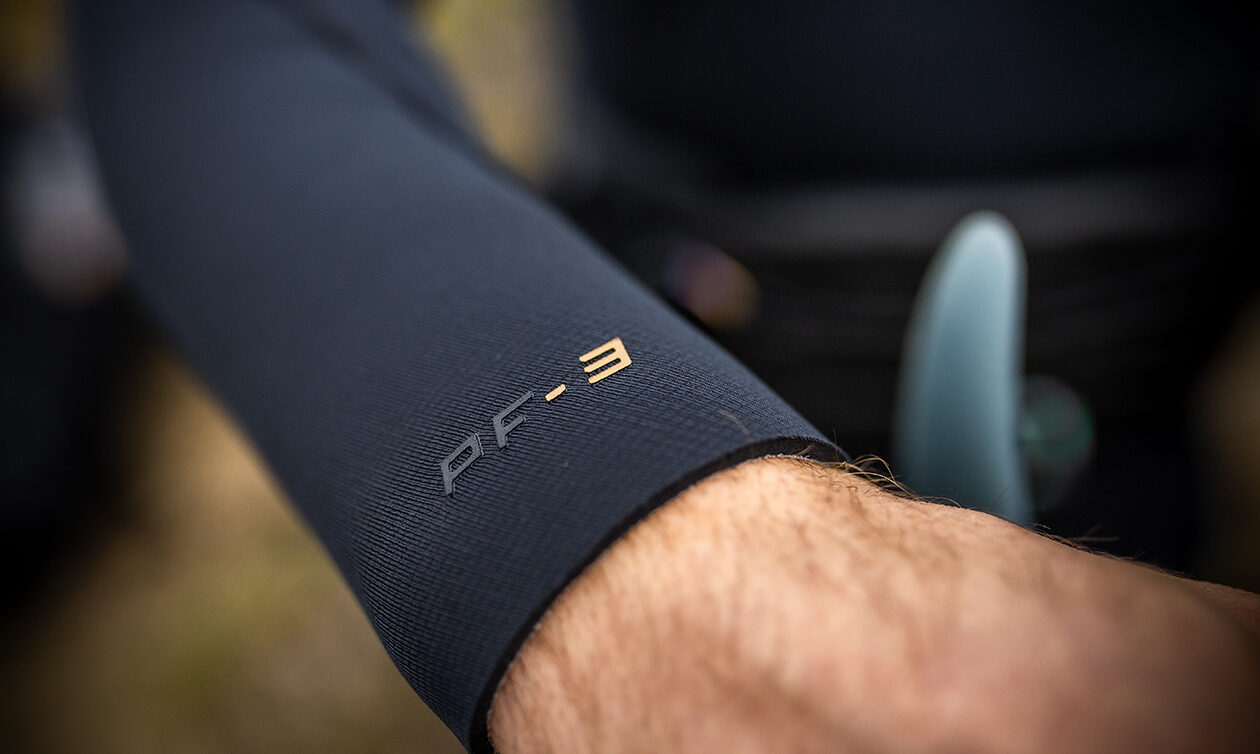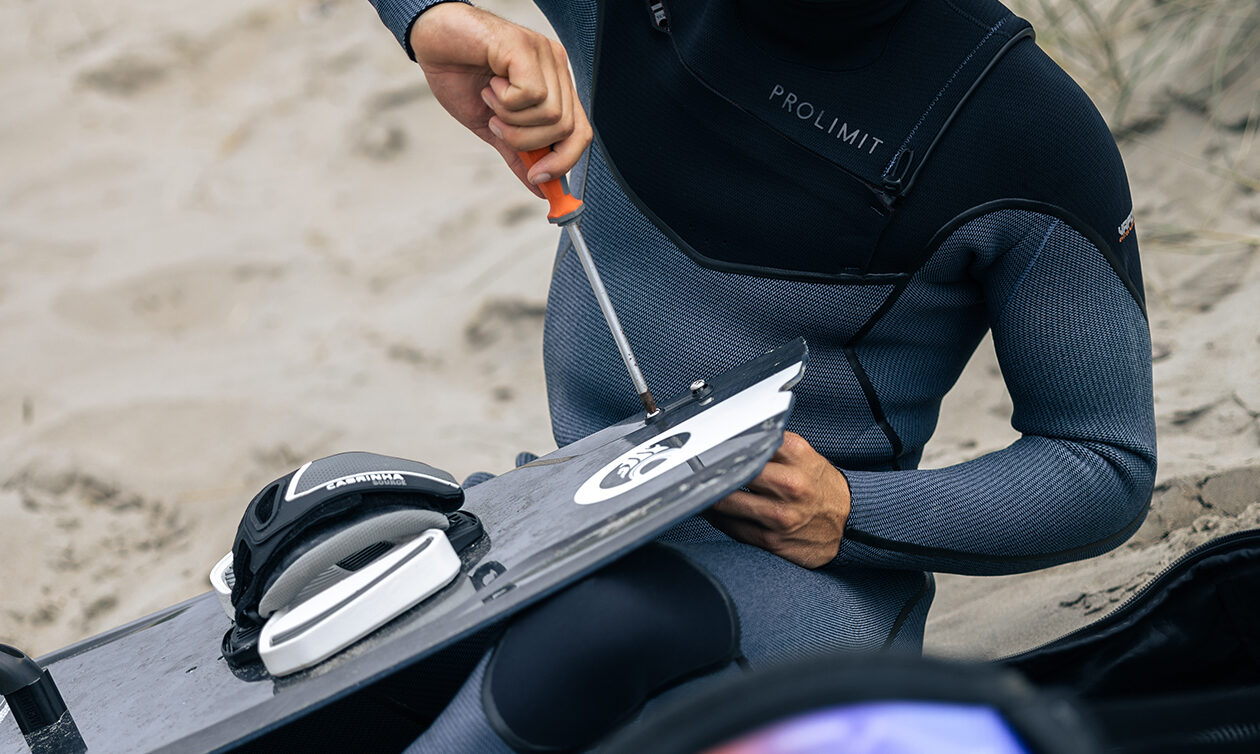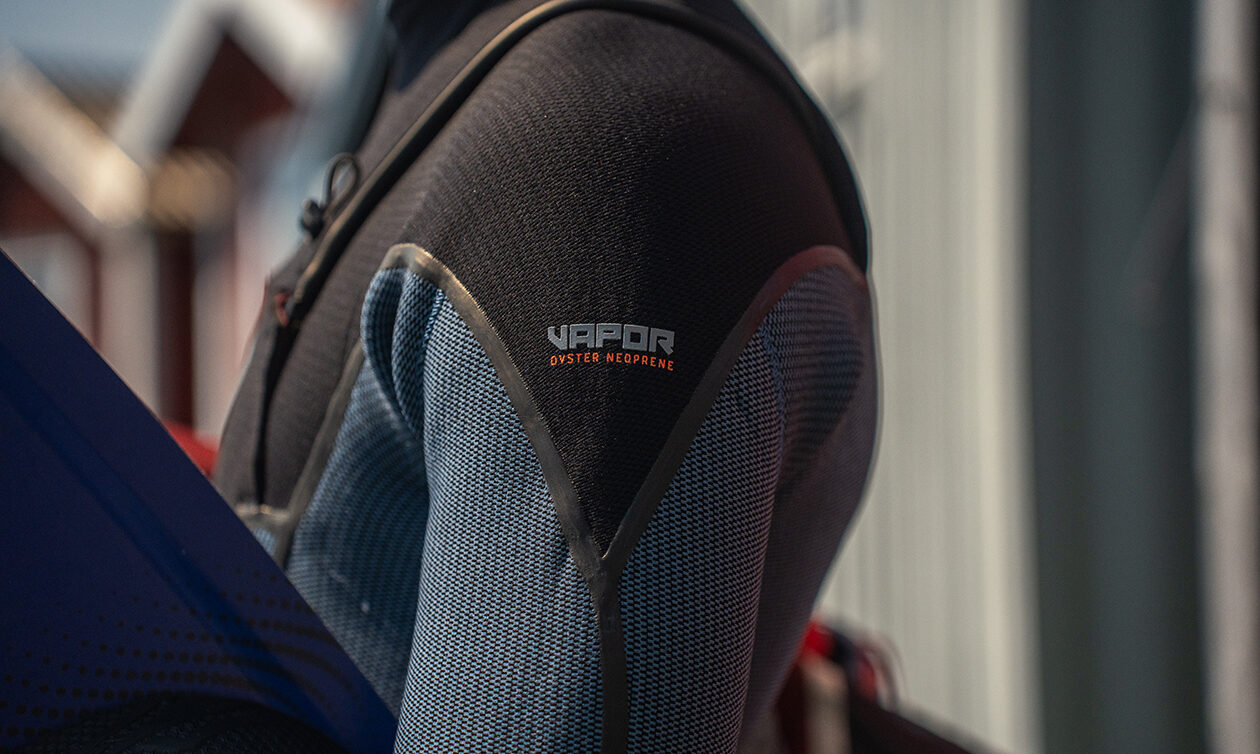What would you say to any customers who are worried that this might not be as stretchy or warm as neoprene?
Prolimit suits are well known to be stretchy, warm and quality wetsuits. As mentioned this is an eight-years process coming this far and our wetsuits will remain as warm and stretchy as they were. Prolimit will keep our unique four-layer construction with our Thermal Rebound layering which is unique in the industry and warmer than any other construction. To any concerned about the performance of our neoprene-free wetsuits, we want to assure you that our alternative materials have been carefully selected and rigorously tested since 1997 to meet the highest standards and our wetsuits offer the same level of stretch, flexibility, and warmth as traditional neoprene. You can trust that our commitment to sustainability doesn’t compromise the performance and quality you expect from Prolimit wetsuits.
Do the latest wetsuits all incorporate dope-dyed yarns, other recycled materials and water-based glues like your previous suits?
Yes, the Dope Dye process is what we’ve been using for many years and this process saves 119 liters of water in the production process. We also use recycled polyester and recycled PET bottles for our linings.
Environmental factors aside, are there any key technical features in the new suits that you’d like to highlight to kitesurfing fans?
Yes of course – our four-layer Thermal Rebound technology, warmer than any other three-layer neoprene… the Velcro-attached leg straps provided with our suits and the drain holes which work with the leg straps… the alternative arm position specially made for wind sports (different from surfing brands)… the Zodiac and Velvet Airflex linings… the FTM Glued and Blindstitched protected seams… the reinforcement patches on every crucial seam connection point… and the way we use GBS and non GBS seams to avoid rash and increase comfort with watertightness.
Are the new suits approved by your team riders?
Our suits are extensively tested by the best. In recent years our parent company acquired the Naish brand and many of the team riders who switched over are amazed by the comfort and quality of their new suits.
We’re sure the journey to sustainability doesn’t end here. What will your team be working towards next?
Our next phase will be introduced soon, making recycling wetsuits possible. Not just reusing the neoprene for other products but recycling all fabrics, the rubber, the zipper, the polyester lining and so on into new raw materials. We will keep you updated: we’ve got you covered! ■

